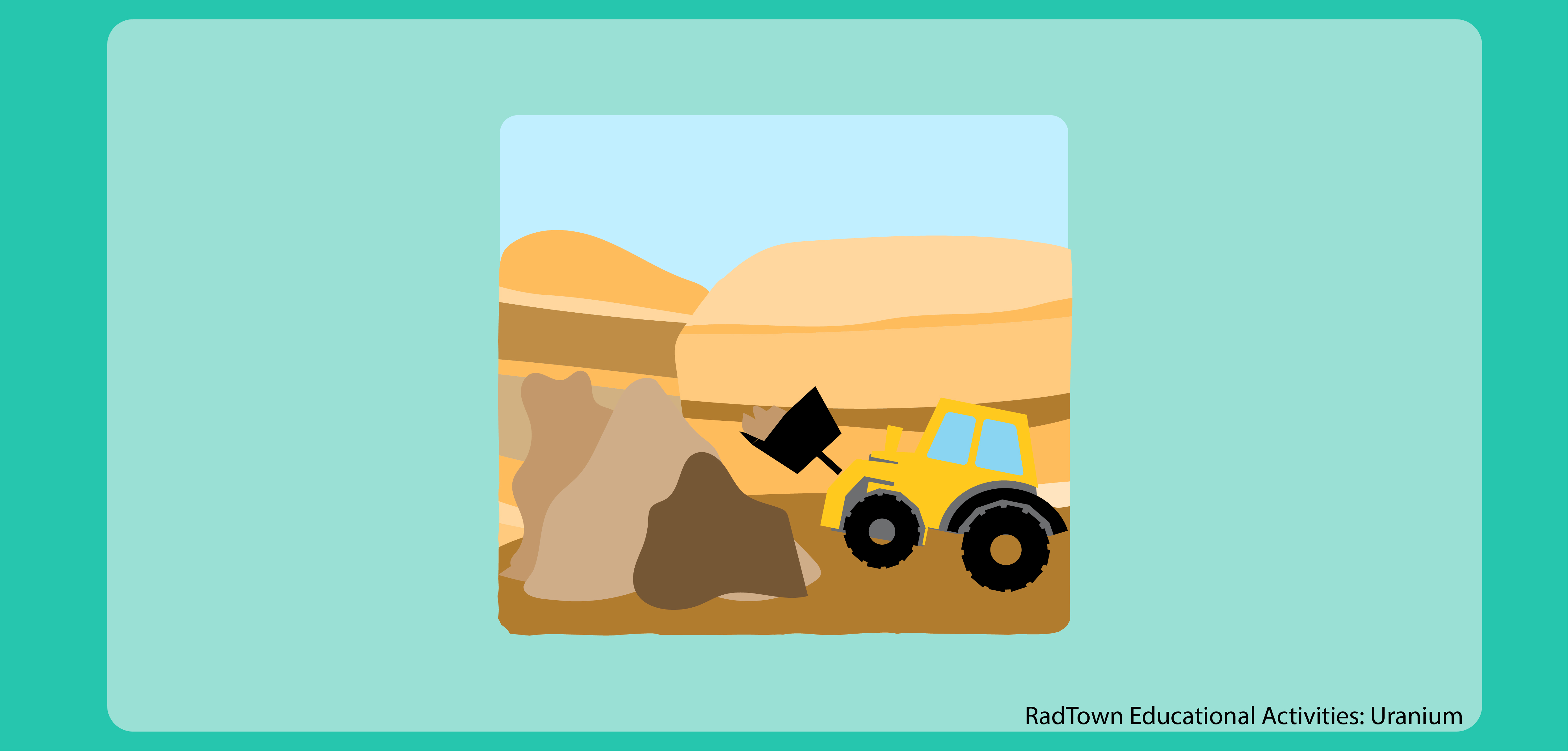RadTown Uranium Activity 6: Radiation Cleanup and Advocacy Objectives
Uranium was primarily mined for nuclear weapons development in the 1940s, and many Native American and Alaska Native communities have been further exposed to radiation as a result of these activities. Learn more about the history of community advocacy, and help your students craft their own advocacy plans using this free educational activity. This activity is intended for middle and high school students.
- Objectives
- Next Generation Science Standards
- Materials and Resources
- Printable Worksheets and Classroom Aids
- Time
- Vocabulary
- Directions
- Common Core State Standards
Objectives
Students will:
- Investigate how people and the environment have been impacted by radiation-related events.
- Examine what cleanup and advocacy efforts have been, or need to be, completed related to these events.
- Identify advocacy efforts that they or others can implement.
Next Generation Science Standards
The concepts in this activity can be used to support the following science standard:
- ESS3. Earth and Human Activity
Materials and Resources
Each italicized document title can be found at the bottom of this page, and is available for printing and distribution.
- RadTown Uranium: Teacher Background Information
- Vocabulary Materials
- Internet-accessible computer and projector or student computers with Internet access
- Radiation Cleanup and Advocacy Worksheet (one per student, pair or group)
Printable Worksheets and Classroom Aids
Time
You may choose to have students complete the entire activity within one or two class periods. If time or computer access is limited, the activity can be introduced, completed outside of the class and concluded in another class period.
Vocabulary
- Ionizing radiation
- Nuclear energy
- Radiation exposure
- Uranium
- Uranium mining
- Uranium milling
Directions
- Start with a vocabulary activity if students are not familiar with uranium and the vocabulary used in this activity.
- Explain that uranium was primarily mined for nuclear weapons development in the 1940s and for both nuclear weapons and energy production following World War II. Nuclear testing was also conducted, and the safe disposal of radioactive waste has been a consideration with the mining, testing and use of radioactive materials.
- Investigate one of the following topics as a class or have students research the following topics to learn about events that took place during the uranium boom, the impact it has left on the people and the environment, and advocacy efforts and/or programs that may be in place to clean up the affected areas. Events that have occurred locally can also be selected as well as national events from the Highlights in Uranium History timeline found in the Uranium: Teacher Background Information.
- The Return of the Navajo Boy is a documentary is based on a brother being reunited with his family. The family uses the documentary to raise awareness and campaign for the cleanup of abandoned uranium mines. Students can view the documentary trailer, webisodes or information online.
- The Firecracker Boys: H-Bombs, Inupiat Eskimos, and the Roots of the Environmental Movement is a book by Dan O’Neill. The book is based on Edward Teller (the father of the hydrogen bomb) and his plan to detonate nuclear bombs off the coast of Cape Thompson in Alaska. Related information can be found online by searching “Project Chariot.”
- Bikini Atoll in the Marshall Islands is where the U.S. conducted nuclear weapons testing between 1946 and 1958. Books and movies are available about the people of Bikini Atoll.
- Provide students with the Radiation Cleanup and Advocacy Worksheet. Direct students to complete the worksheet based on the topic they researched or based on radiation-related issues that may exist within their community, state or tribal nation. If the latter, investigate potential local, regional or state issues in advance and help guide students to resources, including people (e.g., advocates, environmental and health officials or staff, and regional Environmental Protection Agency [EPA] staff) that they may use to answer the questions. Consider inviting a speaker(s) to share information about local, regional or state issues and actions. Note that the U.S. Department of Energy and EPA have programs to clean up radioactive waste. The EPA’s Superfund program is part of the government’s effort to clean up areas contaminated by hazardous waste.
- Conclude by asking students to share what they or their community can do. Education and advocacy are needed to ensure the proper clean up of radioactive waste and to prevent future generations from experiencing the impacts of elevated radiation levels.
- Optional activities or extensions:
- Encourage students to put their ideas into action by developing an advocacy project or campaign. Advocacy ideas may include:
- Those identified by students on the Radiation Cleanup and Advocacy Worksheet.
- Writing letters to tribal leaders or Congress prompting action on a uranium-related issue in their community or region.
- Creating an informational or call to advocacy video.
- Creating a social media campaign to raise awareness.
- Creating informative and educational posters that can be displayed at school and in the community.
- Encourage students to put their ideas into action by developing an advocacy project or campaign. Advocacy ideas may include:
The concepts in the Radiation Cleanup and Advocacy activity align with the following
- CCSS English Language Arts Standards for Literacy in History/Social Studies, Science, & Technical Subjects:
- CCSS.ELA-LITERACY.SL.6-12.2 Comprehension and Collaboration
- CCSS.ELA-LITERACY.SL.6-12.5 Presentation of Knowledge and Ideas
- CCSS.ELA-LITERACY.WHST.6-12.1 Text Types and Purposes

